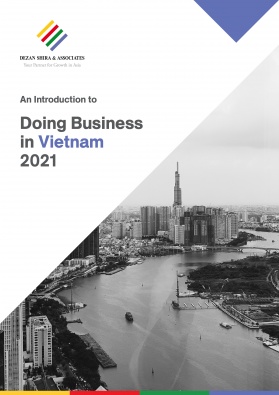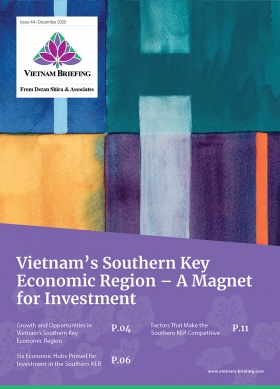Vietnam’s Free Trade Agreements – Opportunities for Your Business
- Vietnam has used its participation in international free trade agreements as an instrument to ensure increased economic power and financial security.
- Vietnam hasn’t shied from participating and looking at free trade agreements beyond ASEAN and at the international community to fuel its growth as shown recently by the EVFTA and the UKVFTA.
- Nevertheless, challenges remain as Vietnam will need to embark on further domestic reforms to ensure it can remain competitive.
Free trade agreements (FTAs) are when two or more countries agree on the terms of trade between them. They determine the value of tariffs and duties that countries impose on imports and exports. In 2007, with Vietnam’s ascension into the World Trade Organization (WTO) – it took a significant step integrating with world trade and subsequently entering into several free trade agreements.
Over the past few years, Vietnam has been active in signing bilateral trade agreements with countries throughout the world. Additionally, due to its membership in the Association of Southeast Asian Nations (ASEAN), Vietnam has become a party to several FTAs that the regional trade bloc has signed.
FTAs – The benefits
The benefits of the free trade agreements will enable Vietnam’s economic development to continue to shift away from exporting low-tech manufacturing products and primary goods to more complex high-tech goods like electronics, machinery, vehicles, and medical devices.
This can be done in two ways – first, through more diversified sourcing partners through larger trade networks and cheaper imports of intermediate goods from partner countries, which should boost the competitiveness of Vietnam’s exports.
Second – through partnership with foreign firms that can transfer the knowledge and technology needed to make the jump into higher value-added production. An example of this is the recently launched VSmart phone manufactured by Vietnamese conglomerate Vingroup.
Vietnam is touted as a low-cost manufacturer with several companies such as Samsung and Nokia setting up shop to manufacture and then export electronics, but the latest example shows how Vietnam can develop its own products from the transfer of know-how technology.
Such sophisticated business practices and technology will help boost Vietnamese labor productivity and expand the country’s export capacity.
With recent trade agreements such as the Comprehensive and Progressive Agreement for Trans-Pacific Partnership (CPTPP), EU-Vietnam FTA (EVFTA), UK-Vietnam FTA (UKVFTA) in effect, and the upcoming Regional Comprehensive Economic Partnership (RCEP) – Vietnam seems to prioritize international trade integration trade partners outside ASEAN.
Such trade agreements will allow Vietnam to take advantage of the reduced tariffs, both within the ASEAN Economic Community (AEC) and with the EU and US to attract exporting companies to produce in Vietnam and export to partners outside ASEAN.
The EVFTA Report 2018 by the European Chamber of Commerce (EuroCham) in Vietnam revealed that 72 percent of EuroCham members believed that the EVFTA will make Vietnam more competitive and turn it into a hub for European businesses.
Vietnam’s entry into these trade deals will also ensure alignment with national standards ranging from employee rights to environmental protection. Both the CPTPP and EVFTA require Vietnam to conform to the International Labor Organization (ILO) standards. Chan Lee from the ILO noted that this is an opportunity for Vietnam to modernize its labor laws and industrial relations systems.
List of Vietnam’s free trade agreements
|
# |
Acronym |
Effective From |
Parties |
|
1 |
AFTA |
1993 |
ASEAN |
|
2 |
ACFTA |
2003 |
ASEAN, China |
|
3 |
AKFTA |
2007 |
ASEAN, South Korea |
|
4 |
AJCEP |
2008 |
ASEAN, Japan |
|
5 |
VJEPA |
2009 |
Vietnam, Japan |
|
6 |
AIFTA |
2010 |
ASEAN, India |
|
7 |
AANZFTA |
2010 |
ASEAN, Australia , New Zealand |
|
8 |
VCFTA |
2014 |
Vietnam, Chile |
|
9 |
VKFTA |
2015 |
Vietnam, South Korea |
|
10 |
VN – EAEU FTA |
2016 |
Vietnam, Russia, Belarus, Amenia, Kazakhstan, Kyrgyzstan |
|
11 |
CPTPP (previously known as TPP) |
December 30, 2018, came into effect in Vietnam January 14, 2019 |
Vietnam, Canada, Mexico, Peru, Chile, New Zealand, Australia, Japan, Singapore, Brunei, Malaysia |
|
12 |
AHKFTA |
Effective in Hong Kong (China), Laos, Myanmar, Thailands, Singapore and Vietnam from June 11, 2019 |
ASEAN, Hongkong (China) |
|
13 |
EVFTA |
August 1, 2020 |
Vietnam, EU (27 members) |
|
14 |
UKVFTA |
May 1, 2021 |
Vietnam, The UK |
|
15 |
RCEP |
January 1, 2022 |
ASEAN, China, Korea, Japan, Australia, New Zealand |
|
Currently under negotiation |
|||
|
16 |
Vietnam – EFTA FTA |
Negotiations commenced May 2012 |
Vietnam, EFTA (Switzerland, Norway, Iceland, Liechtenstein) |
|
17 |
Vietnam – Israel FTA |
Negotiations commenced December 2015 |
Vietnam, Israel |
Source: WTO Center Vietnam
Challenges posed by FTAs
The FTAs may also come with some added downsides. Such agreements are likely to trigger aggressive competition from foreign rivals on local businesses – particularly in the agriculture sector including meat and dairy products from the EU, Australia, and Canada.
If local firms do not adapt, make use of new market opportunities and potential partnerships with foreign firms – they could find competing in the market challenging.
The Vietnamese government would also need to continue on its path of reforms – strengthening the banking sector, removing corruption, refining legal and tax structures, and improving trade facilitation.
Future growth from FTAs
Vietnam’s Ministry of Planning and Investment forecast that the CPTPP could increase Vietnam’s GDP by 1.3 percentage points by 2035, while the EVFTA could boost GDP by 15 percent. These trade deals along with already signed and upcoming FTAs are likely to ensure that Vietnam remains competitive in the short-to-medium term.
Vietnam’s key free trade agreements
European Union Vietnam Free Trade Agreement (EVFTA)
The EVFTA is an ambitious pact providing almost 99 percent of the elimination of custom duties between the EU and Vietnam. As per the Ministry of Planning and Investment (MPI), the FTA is expected to help increase Vietnam’s GDP by 4.6 percent and its exports to the EU by 42.7 percent by 2025. While the European Commission has forecast the EU’s GDP to increase by US$29.5 billion by 2035.
See also: Vietnam-EU Trade: EVFTA Comes Into Effect August 1
UK-Vietnam free trade agreement (UKVFTA)
The UKVFTA took effect on May 1, 2021. Since then trade between the two nations has boomed. In 2022, the UK spent more than US$6 million on goods manufactured in Vietnam. This was 5.2 percent over 2021.
See also: Vietnam Issues Preferential Tariffs, Rules of Origin Guidelines for UKVFTA
Vietnam-Korea Free Trade Agreement (VKFTA)
Since its inception more than seven years ago, the VKFTA has seen a huge boom in two-way trade between Vietnam and South Korea. Under the VKFTA, Vietnam removed 31 tariff lines imposed on Korean electronic products and components. When these tariffs were removed importing parts for electronic devices, like mobile phones, from Korea became cheaper. As a result, the presence of South Korean electronics companies like Samsung has expanded exponentially.See also: Seven Years On: 4 Ways the Vietnam-Korea FTA is Changing Vietnam
ASEAN-India Free Trade Area (AIFTA)
Though an India-Vietnam trade agreement doesn’t exist there is an ASEAN-India free trade agreement governing trade between the two emerging economies. The ASEAN-India free trade agreement offers both countries a slew of opportunities to invest in each other and develop complementary supply lines.
See also: Vietnam’s NA Chairman Visit to India Underlines Increasing Trade
Australia-Vietnam Free Trade Agreements
Both Australia and Vietnam possess export driven economies. As a result, trade between the two countries is covered by a number of overlapping free trade agreements. These include: The ASEAN-Australia-New Zealand Free Trade Agreement (AANZFTA), Comprehensive and Progressive Agreement for Trans-Pacific Partnership (CPTPP), and the Regional Comprehensive Economic Partnership (RCEP).
See also: Vietnam – Australia Trade and Investment: CPTPP Helps Fuel Growth
Canada-Vietnam Free Trade Agreement
Canada and Vietnam do not have a bilateral free trade agreement, however, they are both partied to the CPTPP. This agreement has facilitated greater trade between the two nations with Canada benefitting from great access to Vietnam’s consumer market for dairy products and agricultural goods.
See also: Vietnam and Canada Trade: Leveraging the CPTPP
ASEAN-Hong Kong China Free Trade Agreement (AHKFTA)
At the end of 2019, Hong Kong was the second biggest investor in Vietnam. Hong Kong businesses have invested more than 1,300 projects in Vietnam on key sectors such as textiles and garments, and real estate.
See also: The ASEAN-Hong Kong China Free Trade Agreement and Vietnam
Choosing a professional service to evaluate FTAs for your business
Finding one’s way through the legalese that many of these FTAs use to spell out their rules and regulations can often be cumbersome. This often is one of the most cited reasons why businesses fail to take advantage of the benefits available to them. Therefore, it is strongly suggested that businesses and investors consult with a professional service with strong experience in the region. This will allow a business to have a reliable, and clear source of information before making an investment.
Note: The article was first published in May 2015 and has been updated to include the latest developments.
About Us
Vietnam Briefing is produced by Dezan Shira & Associates. The firm assists foreign investors throughout Asia from offices across the world, including in Hanoi, Ho Chi Minh City, and Da Nang. Readers may write to vietnam@dezshira.com for more support on doing business in Vietnam.
We also maintain offices or have alliance partners assisting foreign investors in Indonesia, India, Singapore, The Philippines, Malaysia, Thailand, Italy, Germany, and the United States, in addition to practices in Bangladesh and Russia.
- Previous Article Political Considerations When Choosing Your China+1 Alternative: Thailand and Vietnam
- Next Article Why Reforms are Necessary Despite Vietnam’s Successful Containment of Pandemic








